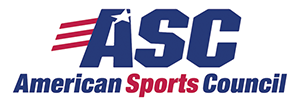NWLC Continues to Misunderstand Title IX
The National Women’s Law Center (NWLC) via Neena Chaudhry doesn’t let two days go by before taking advantage of the immensely unfortunate dismissal of our case, American Sports Council v. the Department of Education, to throw easy, rhetorical bait to its supporters and further distinguish itself from serious Title IX reformers who are trying to achieve a fair implementation of the law.
The post’s first transgression is the title: “Title IX Survives, Again.” The NWLC’s flair for the dramatic and its reliance upon this cheap trick to get attention never ceases to amaze. Note to Ms. Chaudhry: The American Sports Council has never tried, nor seeks to, repeal Title IX. As our mission statement clearly states, we are “working for reform of Title IX regulations that have led to the widespread elimination of opportunities to male athletes.” Changing how the law is enforced — namely the OCR’s three-prong test and emphasis on proportionality and gender quotas — does not require changing the statute’s original text and intent: “No person in the United States shall, on the basis of sex, be excluded from participation in, be denied the benefits of, or be subjected to discrimination under any education program or activity receiving Federal financial assistance…”
That feeds into the post’s next misstatement that “the law has always applied to high schools, this was merely the latest attempt to weaken Title IX’s application to sports.” Actually, nowhere in the three-part test are high schools mentioned. However, it clearly specifies that intercollegiate athletes are the ones who can be subjected to the test. The NWLC and activist organizations, through lawsuits and complaints and the DOE and OCR, through pressure, are the reasons why gender quotas have even entered into high school athletics, not the language of the law. Our legal attempt to prove that using gender quotas to enforce Title IX in high schools is unconstitutional was an effort to save the opportunities and preserve the athletic experiences of male athletes, not cause harm to them. We were not trying to remove Title IX from high schools but rather remove the method of compliance that is causing tremendous damage to the strength of athletic programs and even more importantly, violating the rights of student-athletes.
Moving on, Ms. Chaudhry seems to think that the ASC’s repeated assertions that schools are cutting male teams directly because of Title IX are bogus. Here at ASC, we believe in using facts and hard evidence, not conjectures based on thin air like the NWLC. We have documented men’s cuts and have publicized schools’ decisions through their press announcements that call out Title IX for years. Why can’t the NWLC just accept that even though “Title IX says nothing about cutting opportunities,” as Ms. Chaudhry writes, that’s what’s happening? Until the NWLC stops lobbying government officials and promotes senseless policies, and until it helps join the common cause of finding a more effective, positive way than gender quotas to enforce Title IX, our young men and women will continue to face the repercussions.
Then, she includes the oft-repeated refrain that schools have three ways of showing that they are providing both genders with equal opportunities. As we stated above, the three-prong test should not be used in high schools because it violates students’ equal protection under the law. That being said, theoretically, the three-prong test does imply that yes, there are that many ways to go about this. But with threats of litigation from the NWLC and others, of course schools are only going to choose proportionality. Schools are reacting to a major incentive to show compliance through statistics; their fear of burdensome, money-draining lawsuits during this economic downturn are preventing them from even considering the other two prongs. Ms. Chaudhry neglects to inform readers that the NWLC filed over 100 complaints in 12 different school districts in 2010 to intimidate high schools into using gender quotas, or else. Not to mention the fact that those complaints are still being reviewed and that no inequality has thus been demonstrated. And on top of that, it’s quite likely that the interests of students are being met, it’s just that more girls are choosing extracurricular activities that don’t involve athletics and that more boys are choosing to play sports.
Furthermore, the post points to the NWLC’s own data to show that girls participation rates are stalling while men continue to come out in larger numbers. However, an analysis using the NCAA’s statistics on Division I shows that there are far more women’s teams (2,653) than men’s teams (2,097) and in gender symmetric sports, there are far more scholarships available for women (32,656) than for men (20,206).
And finally, Ms. Chaudhry had to throw in that “playing sports makes girls healthier, helps keep them in school, and makes them less likely to smoke, use drugs, and become pregnant.” The American Sports Council certainly agrees that sports are a positive influence. We also believe that girls should have the freedom to make the decision themselves whether they want to engage in sports or participate in other activities that can also encourage teamwork, competition and self-esteem building. And we also think that the benefits of sports are not limited to one gender; boys also learn character building and stay out of trouble by joining teams. So if groups like the NWLC promote gender quotas and proportionality, they are effectively preventing boys from reaping the benefits of sports.
We’ll never hear that from the NWLC, will we?
